Charles Entrekin

From the People’s Climate Movement Website
“The Peoples Climate March on April 29, 2017 was a huge success, with over 200,000 people participating in Washington, D.C., and tens of thousands more taking part at over 370 sister marches across the country. The march extended for over 20 blocks down Pennsylvania, with tens of thousands more surging along the mall to push back on the Trump administration’s policies and stand up for ‘climate, jobs and justice.
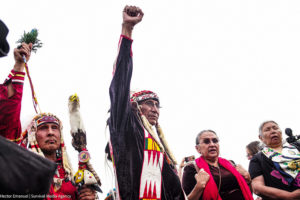
The day’s activities in D.C. began at sunrise with a water ceremony led by Indigenous peoples at the Capitol Reflecting Pool. Participants included Cheyenne River Sioux tribal members who traveled 1,536 miles by bus from Eagle Bend, S.D., to attend the ceremonies.

From the People’s Climate Movement Website
At an opening press conference, representatives from front line communities spoke about the impact that climate change and pollution were already having on their lives and called out the Trump administration for worsening the crisis. They called for a new renewable energy economy that created good paying, union jobs, and prioritized low-income and people of color communities.

The march began at 12:30 PM EDT and was led by young people of color from Washington, D.C., and Indigenous leaders from across the country. Tens of thousands of marchers headed up Pennsylvania Avenue in creatively named contingents, like ‘Protectors of Justice,’ ‘Reshapers of Power,’ and ‘Many Struggles, One Home.’
Art played a central role in the organizing of the mobilization and was on full display during the march. Dozens of giant parachute banners filled the streets, while puppets danced overhead. Some contingents carried sunflowers, a symbol of the climate justice community, while others simply raised their fists in resistance.
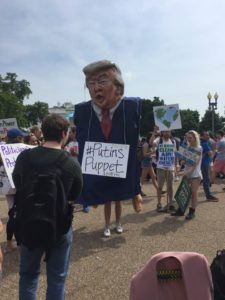

By 2:00 PM EDT, organizers had succeeded in their goal of completely surrounding the White House. Marchers sat down in the streets in a silent sit-in to recognize the damage caused by the Trump administration over the last 100 days and those who are losing their lives to the climate crises. They then created a movement heartbeat, tapping out a rhythm on their chests while drummers kept the time. The heartbeat was meant to show that while march participants came from many different backgrounds and communities, their hearts beat as one. It was a heartbeat of resistance, one that began with the Women’s March and will continue through the Peoples Climate March to May Day and beyond.

After the heartbeat, marchers rose up with a collective roar and continued down to the Washington Monument for a closing rally. Speakers at the rally celebrated the success of the day, while many marchers gathered in ‘Circles of Resistance,’ some set up around their parachute banners, to talk about how to continue to build their movement.
Sister marches took place on Saturday across the world including in Japan, the Philippines, New Zealand, Uganda, Kenya, Germany, Greece, United Kingdom, Brazil, Mexico, Costa Rica, and more. In the United States, tens of thousands more took to the streets at hundreds of events in nearly all 50 states, from the town of Dutch Harbor in Alaska’s Aleutian Islands to the streets of Miami, Denver, Los Angeles, Chicago and other major American cities. Early counts estimated that more than 50,000 events took place nationwide.” From the People’s Climate March website: peoplesclimate.org
https://www.facebook.com/peoplesclimate/videos/1851119185139056/
My wife Gail and I attended the Washington D.C. march to protest President D.T. and his policies against climate change as part of the Elders for Climate Action Organization with friends/activists/committee members Eleanor Despina and Bing Gong. (I agree with author Kelly Rummel that he shouldn’t get any more press).
On the day before the march, we took time out to wander (and be inspired by) the National Mall and Memorial Parks. Gail and I met with her friend of forty-odd years, John Sheridan. John had volunteered to act as tour guide through the national monuments (more like outdoor rooms) and we walked under the flowering cherry trees in the late April afternoon with the sun shining overheard.
It was a quiet and peaceful, but we were occasionally interrupted by a giant, thundering helicopter screaming just above our heads and interrupting our conversations. John said he thought perhaps the military was conducting some kind of exercise. It struck me as strangely inappropriate, odd, unsettling, and vaguely threatening as we strode along. The political atmosphere around us was tense with the presence of the current ascendancy of D.T. and the urgency of the upcoming climate march. The ominous appearance inspired us to discuss and debate conspiracy theories—who really killed J.F.K.; what really happened on 9/11; why did the U.S. overthrow fledgling democracies in Chile, Iran, the Congo, and Guatemala?
We talked about the politics of the day and our past shared histories and John pointed out significant passages in the inscriptions on the walls of the memorials of various famous historical figures as we strolled along. Gail read to me (since I am no longer able to read them for myself) the most compelling passages in her eloquent poet’s voice.
And the voices seemed like echoes in the trees surrounding us, filling us with a sense of awe and history. Martin Luther King, Franklin Delano Roosevelt, Thomas Jefferson, Abraham Lincoln—men who shaped the true America.

“…Both read the same Bible and pray to the same God, and each invokes His aid against the other. It may seem strange that any men should dare to ask a just God’s assistance in wringing their bread from the sweat of other men’s faces, but let us judge not, that we be not judged. The prayers of both could not be answered. That of neither has been answered fully. The Almighty has His own purposes. ‘Woe unto the world because of offenses; for it must needs be that offenses come, but woe to that man by whom the offense cometh.’” A.L. second inaugural address.
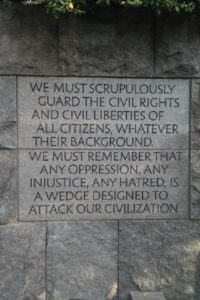
“We the people are the rightful masters of both Congress and the courts, not to overthrow the Constitution but to overthrow the men who pervert the Constitution.” A.L. (1809-1865)

“… this nation, under God, shall have a new birth of freedom — and that government of the people, by the people, for the people, shall not perish from the earth.” A.L.
“We must learn to live together as brothers or perish together as fools.” M.L.K.
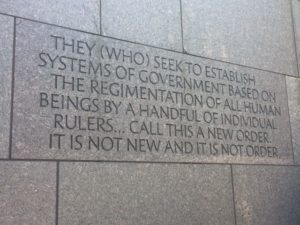
“Capitalism does not permit an even flow of economic resources. With this system, a small privileged few are rich beyond conscience, and almost all others are doomed to be poor at some level. That’s the way the system works. And since we know that the system will not change the rules, we are going to have to change the system.” M.L.K.

“When the people fear their government, there is tyranny; when the government fears the people, there is liberty.” T.J. (1743-1826)
“I have the consolation of adding nothing to my private fortune during my public service and of retiring with hands clean as they are empty.” T.J.

As we exited the park, past the Washington Monument and the Lincoln Memorial Reflecting Pool, it came to me that President D.T. is not one of us. He does not seem to embrace the history of the country or the fundamentals of democracy. He is anathema, a return to the age of authoritarianism, of strongman rulers, and, I must say, it sent a chill down my spine.
And the question came to me, “Why are we here?” And the answer is because D.T. will provide no help to our nation. We are, as the signs read, the guardians of the future. If this is a government,“of the people, by the people, and for the people,” it is up to we the people to protect the government. To enforce the climate accords. The time has come to step forward and be counted and be accountable. The Conscious Elders Network took the following legislative proposal to every Senator in Washington, D.C., that week.
And as I thought long and hard about what this means to me, what kind of ancestor I want to be, I decided to start the following open letter to my grandchildren. There are many years between myself and my grandchildren, as there are many years between some of the voices of inspiration quoted here. But truth is timeless and mindfulness is ageless.
I add the concept of seven generation stewardship, a concept from the Constitution of Iroquois Nations that influences modern environmental sustainability: “In all of your deliberations… in your efforts at law making, in all your official acts, self-interest shall be cast into oblivion.”
Oren Lyons, chief of the Onondaga Nation, writes: “We are looking ahead … to make every decision that we make relate to the welfare and well-being of the seventh generation to come… Where are you taking them? What will they have?”
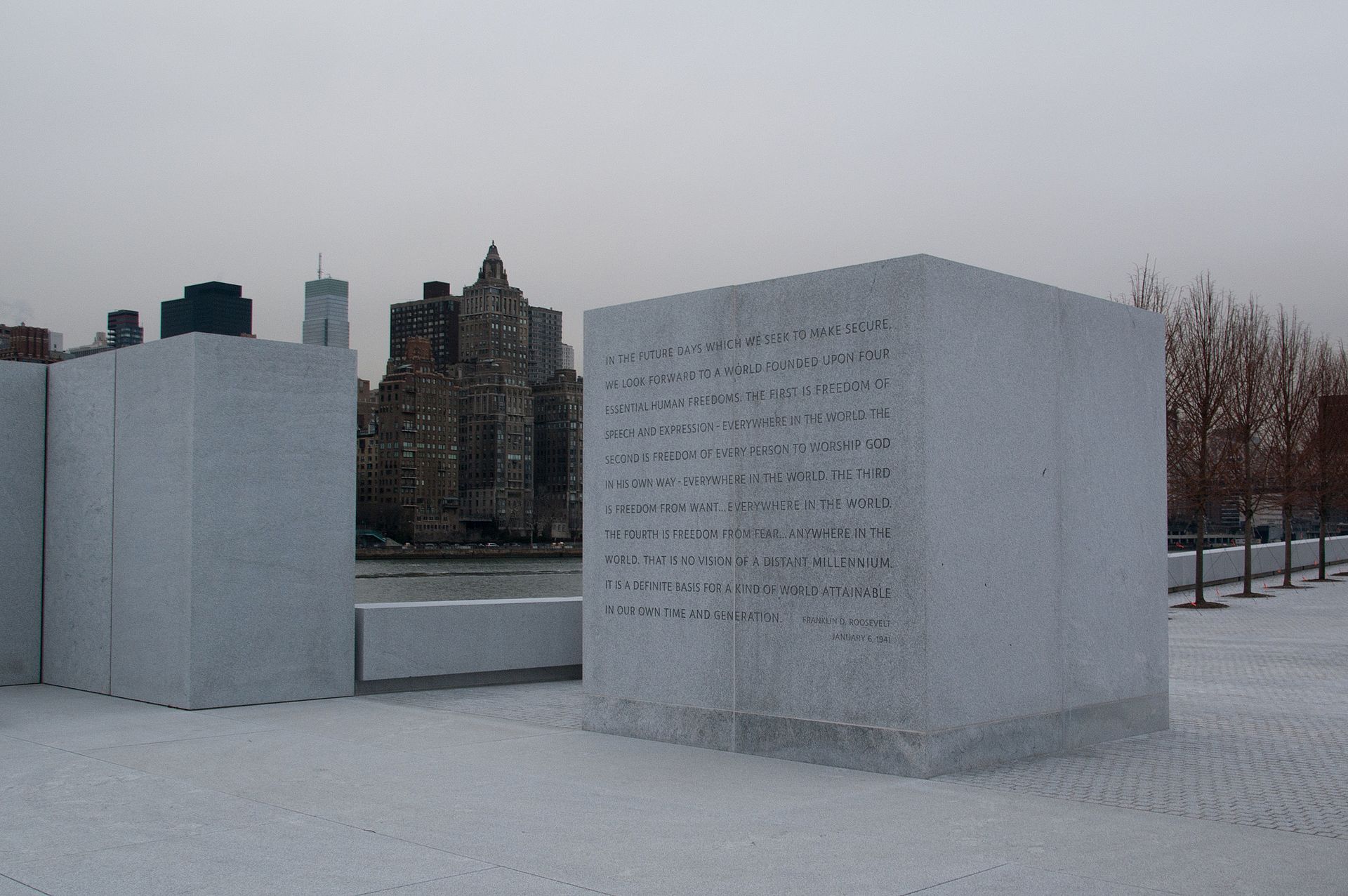

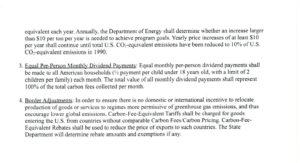
Leave a Reply